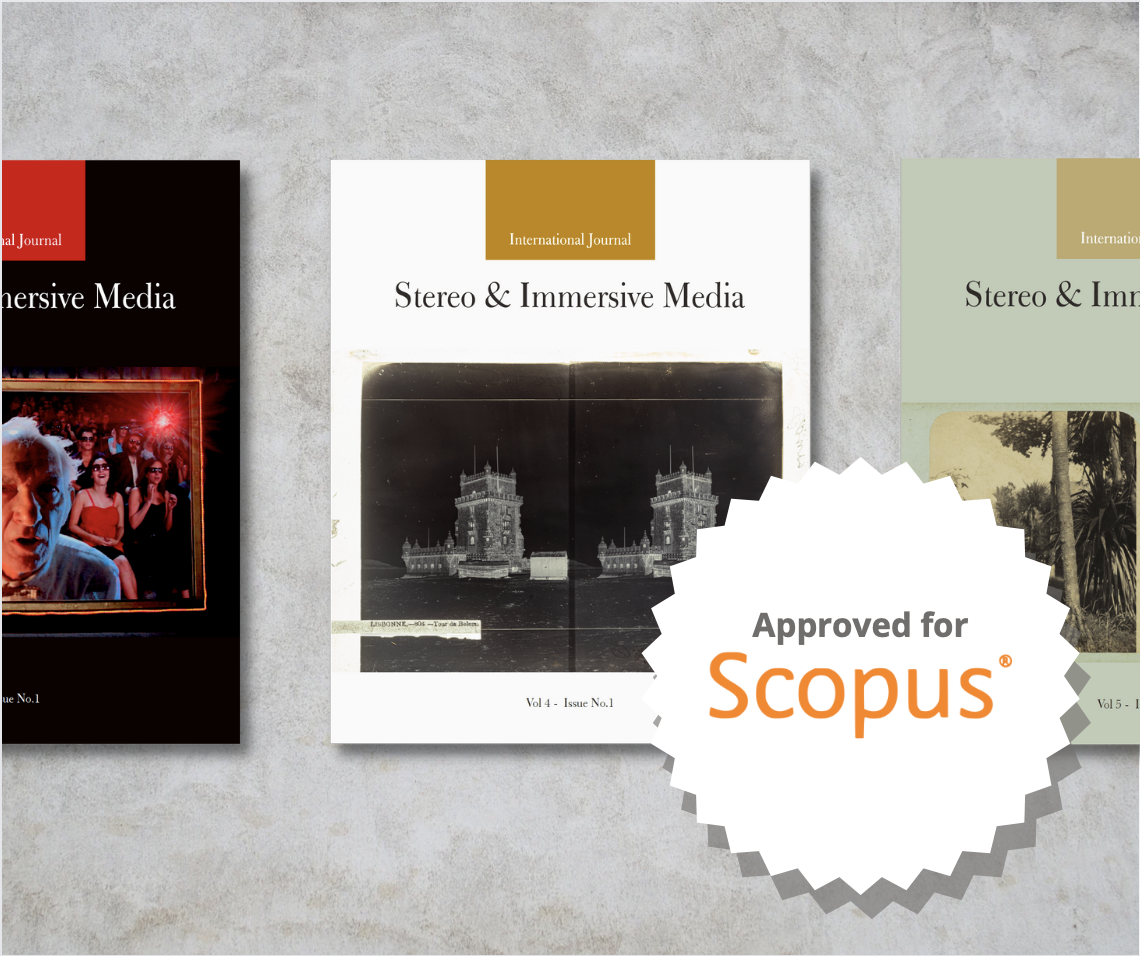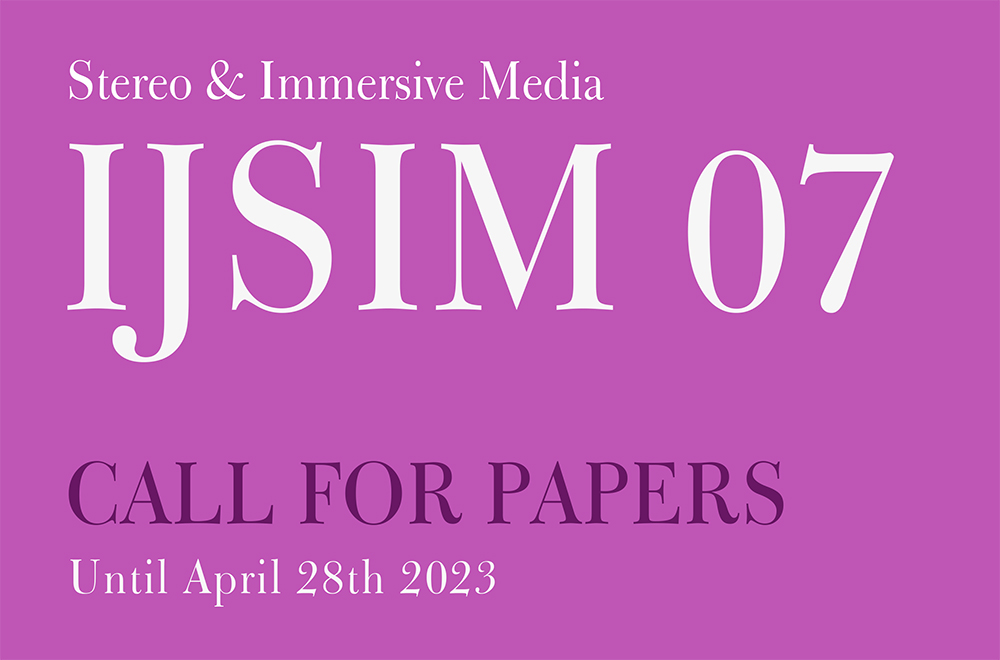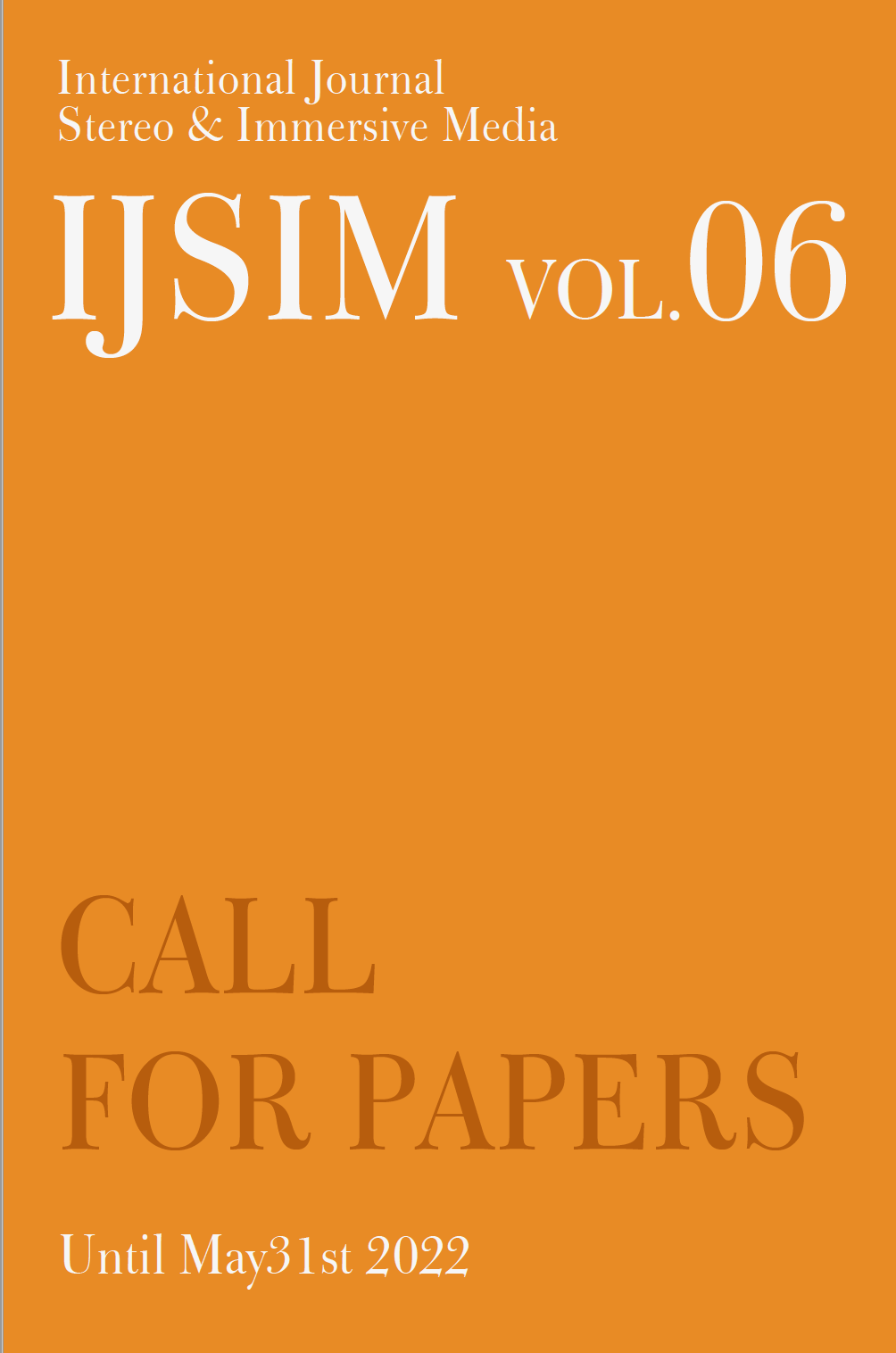IJSIM Call for Papers 2026
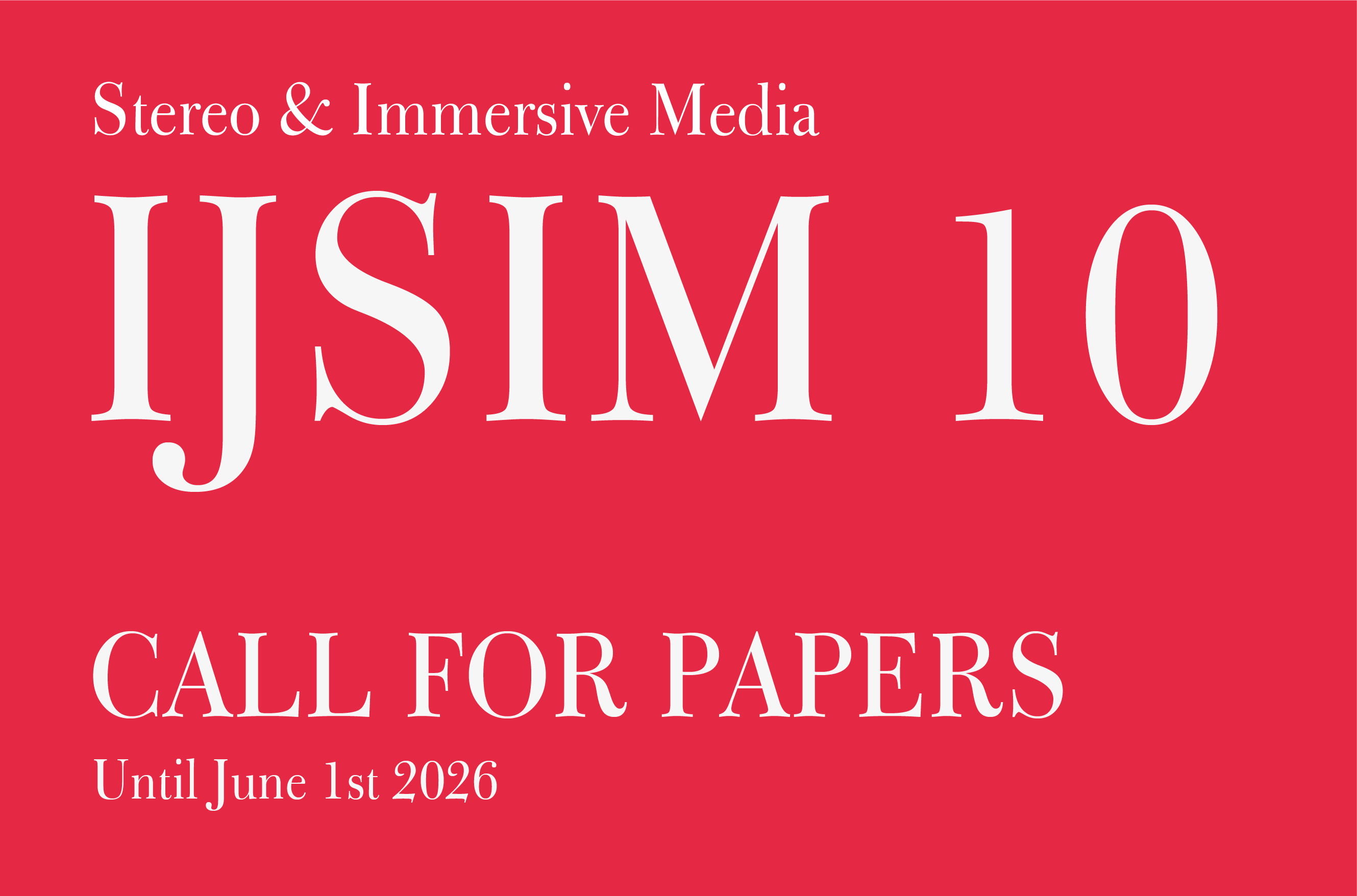
IJSIM Call for Papers Vol. 10 No.1 — 2026
The International Journal on Stereo & Immersive Media (IJSIM) is an open-access and peer-reviewed journal that reflects on immersive media cultures developed by historical media and/ or state-of-the-art technologies. IJSIM is a Scopus-indexed journal edited since 2017 that explores the immersive features of modern media, ranging from Panoramas and Stereoscopic Photography to Extended Reality Media.
For its 2026 issue, the International Journal on Stereo & Immersive Media welcomes papers addressing one or more of the following themes:
1- Stereoscopic Photography and Cinema;
2- Stationary and Moving Panoramas;
3- Optical Shows and Peep Media;
4- Cinema and Sound Media Archaeologies;
5- Media Art Installations;
6- Extended Reality (XR) Media;
7- Sonic Art and New Technologies;
Full paper submissions for Vol.10 No.1 are due by 1 June.
Please find registration and submission information at http://revistas.ulusofona.pt/index.php/stereo/information/authors
Read more about IJSIM Call for Papers 2026


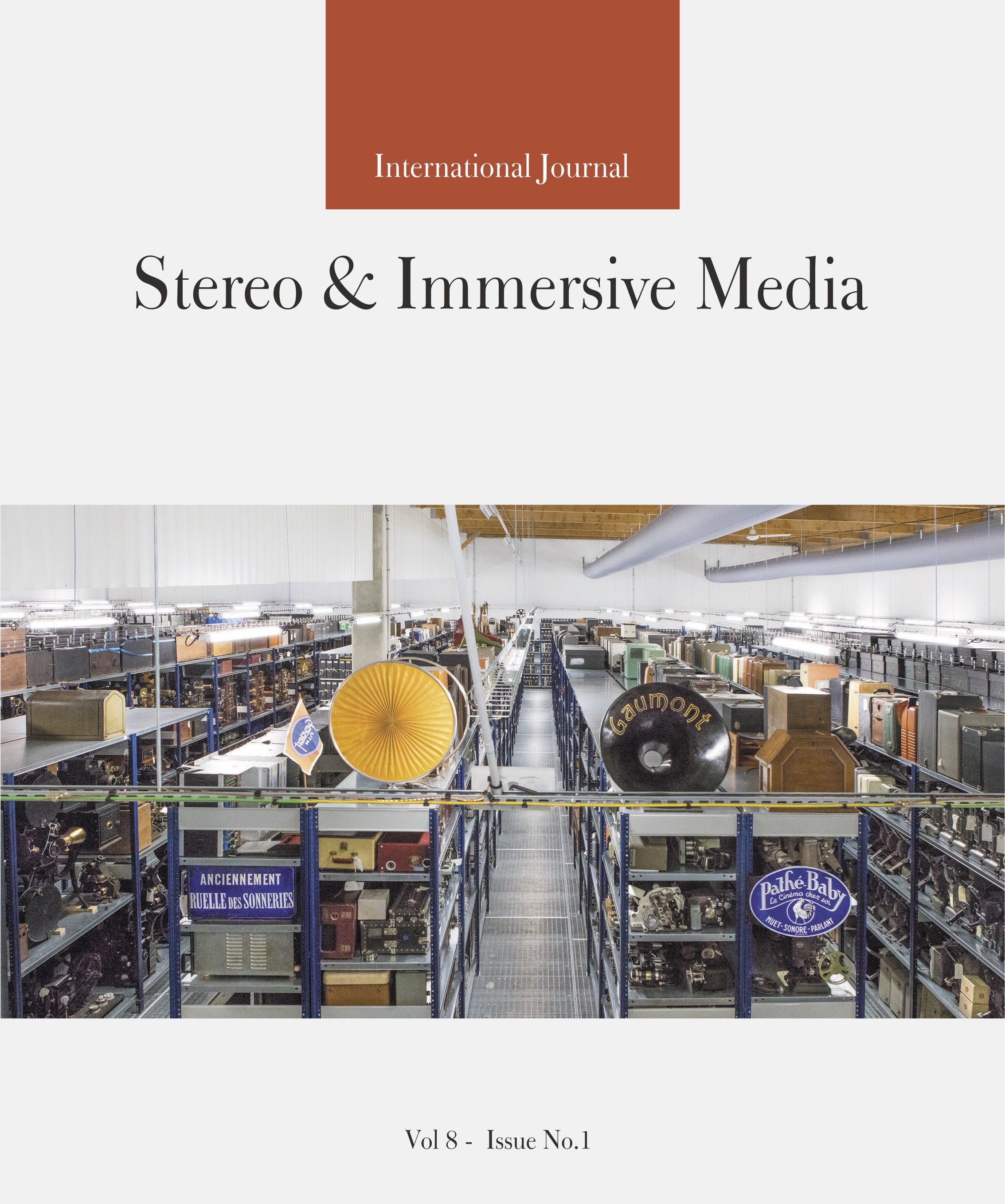 The editorial board of the International Journal of Stereo & Immersive Media is pleased to announce the publication of its 2024 issue (Vol.8), featuring a diverse collection of eight scholarly articles.
The editorial board of the International Journal of Stereo & Immersive Media is pleased to announce the publication of its 2024 issue (Vol.8), featuring a diverse collection of eight scholarly articles.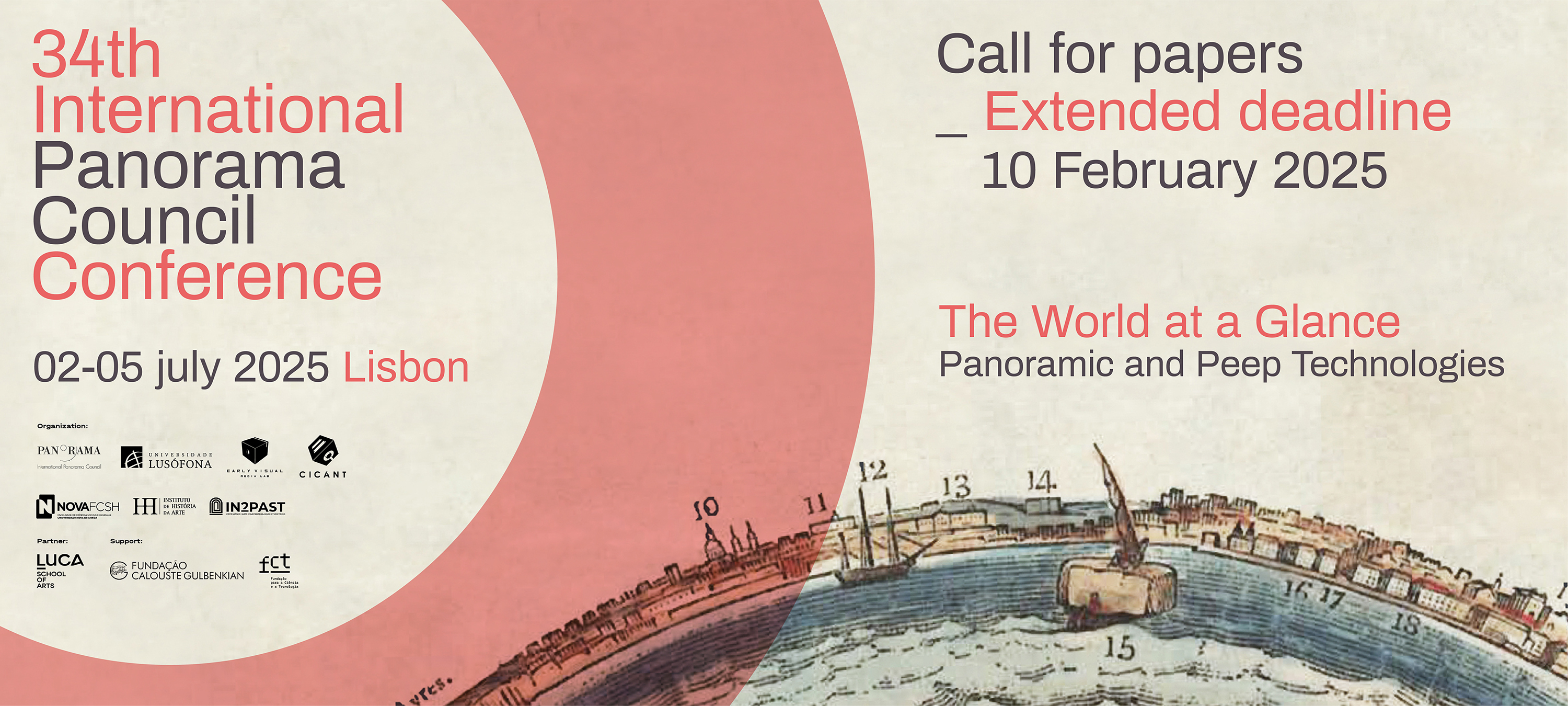 IJSIM’s publisher, Early Visual Media Lab — CICANT, from Lusofona University, together with the International Panorama Council and the Art History Institute (IHA, NOVA-FCSH/IN2PAST) invite scholars, artists, panorama enthusiasts and visual media researchers to submit proposals for presentations that explore the theme “The World at a Glance. Panoramic and Peep Technologies.’” This recasting of Robert Barker’s original title for his invention (1787), “Nature at a Glance” (in French, “La Nature à Coup d’ Oeil”), will explore the modern desire to experience the world visually through panoramic or peep technologies and to embark in virtual travels. Panoramas and panoramic imagery shared these early immersive experiences with (itinerant) peepshows, cosmoramas, neoramas, dioramas, and, among others, in the domestic space, zograscopes, stereoscopic photography, graphoscopes and polyoramas. These theatres of visuality were key achievements in art, education and science, fostering visual curiosity and new skills of looking. Either engaging a distant or a proximate gaze, requiring lenses or a specific vantage point on a viewing platform, these technologies made the world in all its aspects admirable and available at a glance. In addition to challenging the visual sensorium, panoramic and peep technologies often intersected and mobilized a synesthesic universe. By exploring their coexistence and intermediality, new light will be shed on the visual cultures and worldviews they promoted.
IJSIM’s publisher, Early Visual Media Lab — CICANT, from Lusofona University, together with the International Panorama Council and the Art History Institute (IHA, NOVA-FCSH/IN2PAST) invite scholars, artists, panorama enthusiasts and visual media researchers to submit proposals for presentations that explore the theme “The World at a Glance. Panoramic and Peep Technologies.’” This recasting of Robert Barker’s original title for his invention (1787), “Nature at a Glance” (in French, “La Nature à Coup d’ Oeil”), will explore the modern desire to experience the world visually through panoramic or peep technologies and to embark in virtual travels. Panoramas and panoramic imagery shared these early immersive experiences with (itinerant) peepshows, cosmoramas, neoramas, dioramas, and, among others, in the domestic space, zograscopes, stereoscopic photography, graphoscopes and polyoramas. These theatres of visuality were key achievements in art, education and science, fostering visual curiosity and new skills of looking. Either engaging a distant or a proximate gaze, requiring lenses or a specific vantage point on a viewing platform, these technologies made the world in all its aspects admirable and available at a glance. In addition to challenging the visual sensorium, panoramic and peep technologies often intersected and mobilized a synesthesic universe. By exploring their coexistence and intermediality, new light will be shed on the visual cultures and worldviews they promoted.  IJSIM’s publisher, Early Visual Media Lab — CICANT, from Lusofona University, together with the International Panorama Council and the Art History Institute (IHA, NOVA-FCSH/IN2PAST) invite scholars, artists, panorama enthusiasts and visual media researchers to submit proposals for presentations that explore the theme “The World at a Glance. Panoramic and Peep Technologies.’”
IJSIM’s publisher, Early Visual Media Lab — CICANT, from Lusofona University, together with the International Panorama Council and the Art History Institute (IHA, NOVA-FCSH/IN2PAST) invite scholars, artists, panorama enthusiasts and visual media researchers to submit proposals for presentations that explore the theme “The World at a Glance. Panoramic and Peep Technologies.’”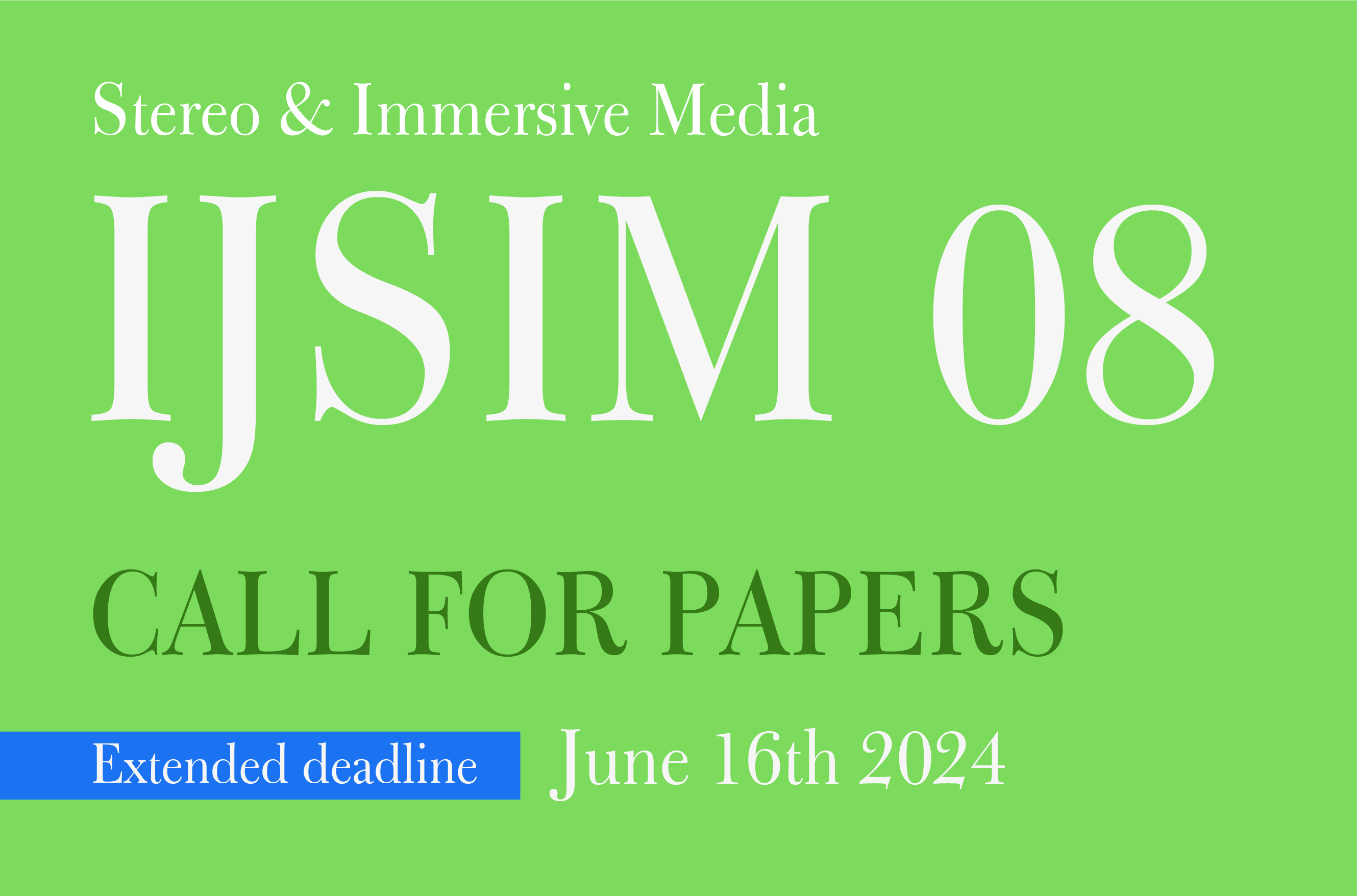 Extended deadline for: IJSIM Call for Papers Vol. 8 2024
Extended deadline for: IJSIM Call for Papers Vol. 8 2024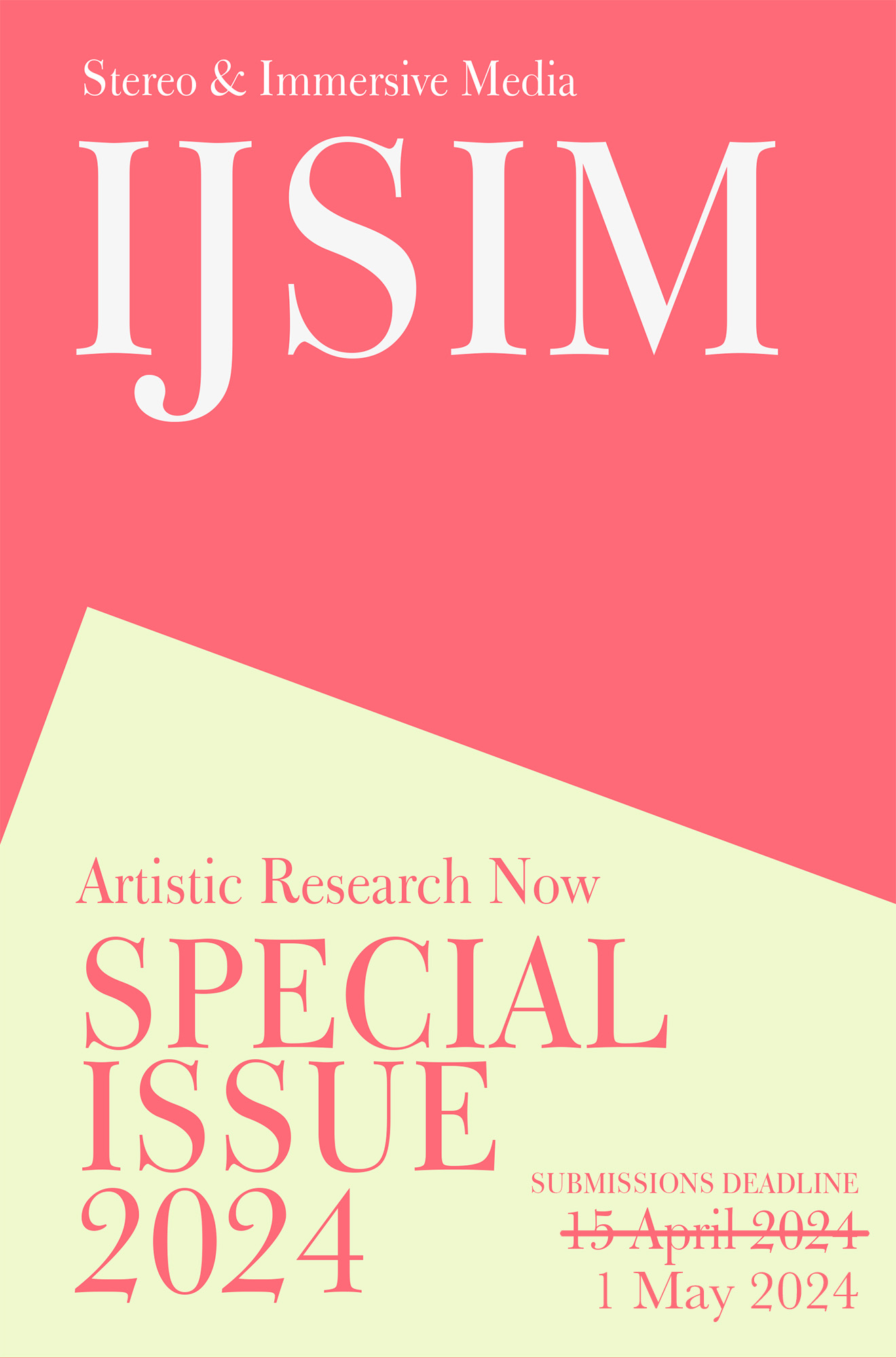
1.jpg)
